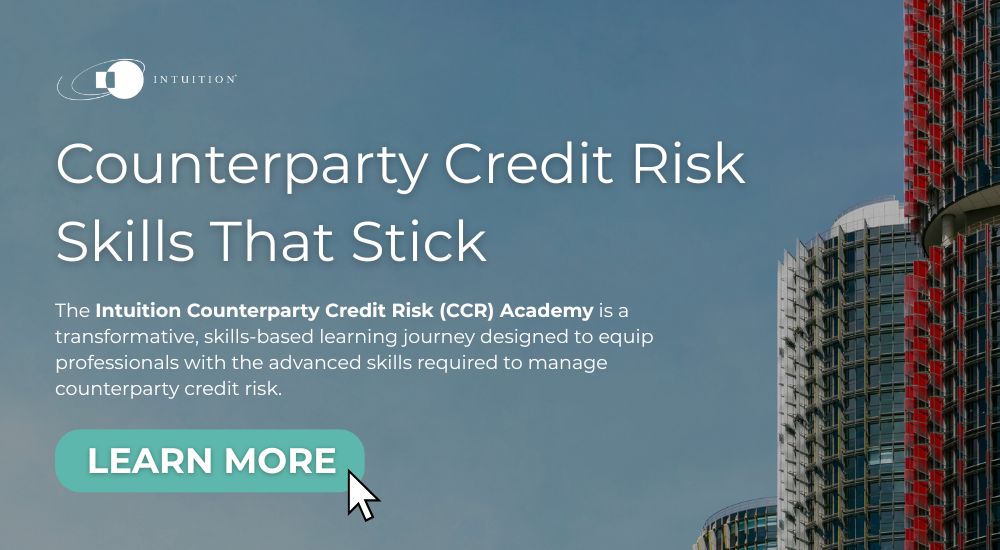The case for robust credit risk capability building at scale
Time to buckle up for a bumpy ride ahead?
Multilateral financial institutions and central banks are voicing concerns about emerging credit cycle headwinds: rapid private credit market growth, risky loan repackaging into CLOs, due diligence shortcuts in frothy markets, and interconnectedness between banks and non-deposit financial institutions.
For business, HR and L&D leaders in financial services, these headwinds arrive as the workforce with prior credit cycle expertise retires while AI fundamentally reshapes credit risk functions. This demands robust credit risk training frameworks that build organizational resilience for what lies ahead.
Head of IMF says risks in private credit market keep her awake at night

The perfect storm? The looming credit risk capability gap
Three converging forces create unprecedented challenges for credit risk functions:
1. The credit cycle may be turning – and many haven’t seen this before
Economists increasingly discuss whether we’re entering heightened credit stress – the first for finance professionals who built careers post-2008/09. Credit risk training during benign conditions may leave stretched credit teams unprepared for stress periods. Sound credit risk management requires judgment and experience gained managing credit through full cycles, which many professionals may now lack.
2. The generational cliff: Losing institutional knowledge at scale
The baby boomer generation holds a disproportionate share of senior credit risk expertise. Their retirement accelerates knowledge loss precisely when it’s most needed. Institutional memory of identifying early warnings, restructuring deteriorating credits, and managing stress scenarios is disappearing. Hiring replacements proves difficult as institutions control costs while competing for scarce risk talent.
Organizations must systematically capture and transfer credit risk expertise through structured workforce skilling programs that scale.
3. AI transformation: New tools, new risks, new skills required
Generative AI and machine learning rapidly transform credit risk analysis – from automated financial spreading to AI-augmented credit memos. This creates a paradox: as AI handles routine analysis, credit professionals need deeper expertise to interpret model outputs, challenge assumptions, and exercise informed judgment. Effective AI augmentation requires understanding both traditional fundamental credit risk analysis and AI system capabilities and their limitations.

Key elements of resilient credit risk capability training
Credit professionals need deep technical expertise and effective human-centric skills to communicate and raise red flags when necessary. Evolving regulations, product innovations, and dynamic market conditions demand continuous learning – think flight simulation training for pilots.
Building resilience means establishing scenario-based, modular credit risk training reflecting today’s uncertainties. Best practice frameworks include:
- Current-cycle context: Modules that incorporate latest signals – e.g. rising term premia, central bank policy stances, CRE vacancy trends etc – so analysts practice with real-world data.
- Scenario-driven case studies: Simulations of stressed scenarios (recession shocks, rapid rate shifts, property downturns) help learners apply theory to fluid situations.
- Technical depth and flexibility: Training that covers fundamental credit analysis principles paired with in-house origination, underwriting, and portfolio monitoring tools.
- Personalized modular structure: Short, accredited tutorials targeting specific skill gaps (e.g. loan structuring, covenant analysis, stress testing) without redundant core content.
Creating desk-ready capabilities aligned with modern workforce needs
Professionals struggle to find learning time. Adult learners crave relevance, immediate applicability, peer learning, and building on their experiences.
Organizations increasingly move from static roles to dynamic, skills-based talent management. While traditional methods retain merit, over 50% of today’s workforce grew up with digital tools and prefer non-linear learning.
Intuition doesn’t offer one-size-fits-all solutions: we co-create solutions with our clients.
Programs we deliver feel “just like day-to-day work”: relevant, hands-on, ready to use. Though final programs differ by client, all share common elements reflecting Intuition’s human-centric experience design approach.

The Intuition difference: Credit risk training that delivers results
For over three decades, Intuition has partnered with leading global financial institutions building sustainable financial, capital markets, credit, and risk capabilities. We excel in practical, application-focused workforce skilling translating into measurable business outcomes.
Core Intuition workforce skilling design principles include:
- Aligned with skills-based workforce planning addressing business acumen, analytical capabilities, and human-centric power skills.
- Modular, iterative, hands-on, applied: Concepts building on each other, applied to increasingly complex real-life situations.
- Workflow alignment: Experiential “day-in-the-life” simulations matching actual work processes.
- Holistic cross-functional collaboration: Transcending silos to foster shared objectives and unified risk culture.
- Pre and post program skills assessments: Measuring competency development and training effectiveness.
- Flexible delivery modalities: Cohort-based learning spaced over time, minimizing desk disruption while enabling on-the-job application.
- Truly blended approach: Self-directed digital learning, instructor-led sessions (virtual/in-person), flipped classroom techniques, peer learning.
- Experiential and active learning emphasis: Learning by doing, not passive consumption.
Intuition’s approach ensures training is relevant, practical, and effective – enabling highly customized, adaptive programs that maximize business impact and learning ROI.
Conclusion: Building resilience through strategic training investment
Organizations navigating the coming credit cycle successfully invest now in comprehensive, practical credit risk management training building real capabilities, at scale.
Intuition has spent three decades partnering with leading institutions co-creating sustainable credit risk expertise. From foundational credit analysis to advanced counterparty risk management, we deliver workforce skilling solutions that translate to better decisions, stronger risk management, and improved business outcomes.

Spotlight: Intuition Know-How – A scalable solution built for this moment
For organizations seeking expert-led, flexible credit risk management training, Know-How provides a proven solution.
With over 697 tutorials and 64+ hours of content, Know-How supports technical skill development in areas such as:
- Credit risk frameworks
- Risk appetite and credit culture
- Credit risk mitigation
- Counterparty credit risk (CCR)
- Early-stage and problem credit management
The platform is structured to meet the needs of both individuals and teams, with tutorials that are accredited, localized (where needed), and regularly updated. It can be hosted on existing LMS platforms or delivered through Know-How’s own platform, with full support from a dedicated client success team.
Spotlight: Intuition Counterparty Credit Risk Academy
Intuition’s Counterparty Credit Risk Academy (CCRA) is a transformative, skills-based learning journey that equips professionals managing complex derivatives exposures with the advanced capabilities, strategic insights, and human-centric skills necessary to proactively manage counterparty credit risk.
Our flexible and modular approach is closely aligned with a ‘day in the life’ CCR workflow, building ‘desk-ready’ practical skills while fostering a holistic, cross-functional view of risk. Customized to the needs of each client, the Intuition CCR Academy delivers personalized and experiential workforce skilling.
Download the full brochure here to see how the program develops expertise that connects directly to business outcomes.


